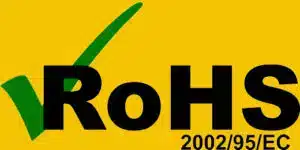A constant monitor is highly recommended; however, it isn’t imperative to use one. When grounding yourself to Earth through the use of a wrist-strap, coil-cord and bonding plug, there’s a chance that you could become disconnected either from Earth, your wrist-strap, bench-mat or even the earth-to-ground system may be functioning incorrectly. This situation could happen […]
No, these signs are made from an insulative material which can generate a static charge. This could potentially harm nearby static-sensitive objects and cause significant damage to them. It is recommended to use ‘ESD signs’ outside of an EPA environment- this could be near your EPA’s entrance. View our ‘ESD signs’ range here.
Yes – an ESD floor is part of a system for personal grounding. “For standing operations, personnel can be grounded via a wrist strap system or by a footwear-flooring system. When a footwear-flooring system is used, personnel shall wear ESD footwear on both feet and the two following conditions shall be met: • The total […]
This is usually in the datasheets of the individual components. It is often referred to as human body voltage (HBV).
There are 3 possible solutions: 1) If the electrostatic potential measured at the surface of the process required insulator exceeds 2,000 V, the item shall be kept a minimum of 30 cm from the ESDS; and 2) If the electrostatic potential measured at the surface of the process required insulator exceeds 125 V, the item […]
If the limits in IEC 61340 -5-1 are exceeded, the ESD control program shall include a tailoring. Tailoring is accomplished by evaluating the applicability of each requirement for the specific application. Upon completion of the evaluation, requirements may be added, modified or deleted. Tailoring decisions, including rationale and technical justification, shall be documented. (IEC 61340-5-1 […]
This is a tricky one and 2 points need to be considered. 1) If the water bottle is conductive and grounded then there is no issue. 2) If the water bottle is not conductive it may produce an electrostatic field. If this is the case then they need to be kept a safe distance from […]
Yes, in accordance with IEWC 61340-5-1 ESD footwear must be worn on both feet. View our range of foot grounding products here. Or, see our bestselling foot grounding product below.
BS EN 61340-5-1:2016
Electrostatic charges are generated when two surfaces come into contact with each-other then separate apart.


